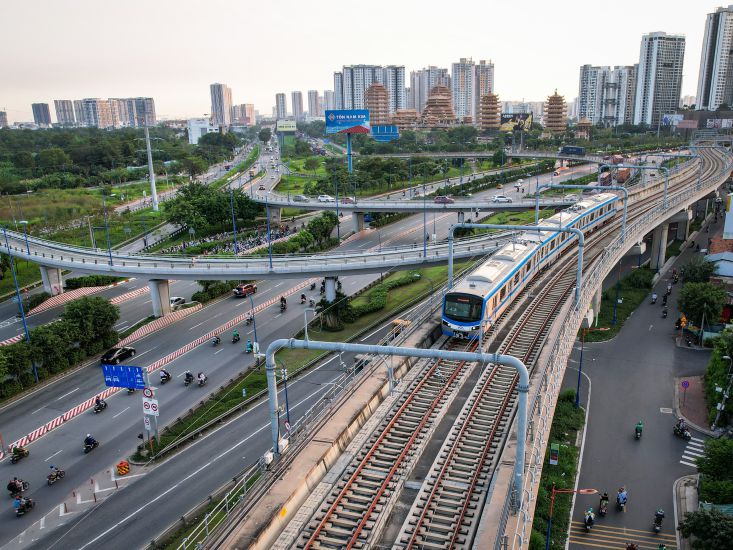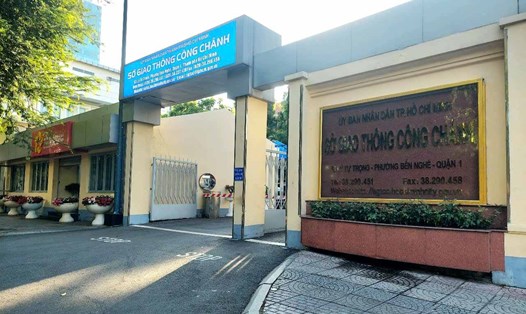Breakthrough traffic infrastructure
After 1975, Ho Chi Minh City focused on building many key traffic projects to expand inner-city and inter-regional connectivity. The East - West axis with Nguyen Van Linh Avenue, Hanoi Highway, National Highway 13, Truong Chinh Street... creates a synchronous traffic network, helping to connect conveniently between areas.
Not stopping there, Ho Chi Minh City also develops many strategic expressways such as Ho Chi Minh City - Long Thanh - Dau Giay, Ho Chi Minh City - Trung Luong, National Highway 22 (Xuyen A Road) ... These routes not only reduce traffic pressure but also promote inter-regional economic development, directly connecting with Dong Nai, Tien Giang, Tay Ninh provinces.
In addition to budget capital, Ho Chi Minh City proactively mobilizes other resources such as ODA capital, BOT cooperation, and BT to implement important projects. One of the typical projects is the East - West Boulevard (Mai Chi Tho - Vo Van Kiet), invested with ODA capital from Japan. This nearly 22km long route helps connect quickly from Thu Duc City to Binh Chanh District, passing through many central districts such as 1, 4, 5, 6, 8, Binh Tan...
In this project, the most notable item is the Saigon River crossing tunnel, connecting District 1 with the new urban area of Thu Thiem (Thu Duc City). Completed in 2011, this is the most modern underpass project in Southeast Asia, contributing to reducing traffic pressure on Saigon Bridge and surrounding routes.
Pham Van Dong route, part of the Tan Son Nhat - Binh Loi - Outer Ring Road project, was invested with 340 million USD under the BT form and completed in 2013. The route helps directly connect Tan Son Nhat airport with national highways 1, 13, 1K, creating a smooth traffic network between Tan Binh, Go Vap, Binh Thanh, Thu Duc districts and Binh Duong and Dong Nai provinces.
Phu My Bridge, inaugurated in 2009, is an important highlight connecting Thu Duc City and District 7. Located on Ring Road 2, the bridge plays a key role in connecting traffic and goods circulation between Cat Lai and Phu Huu ports and the Ho Chi Minh City - Long Thanh - Dau Giay Expressway.

Promoting regional connectivity, opening up new development space
In recent years, Ho Chi Minh City has continued to implement large-scale transport projects, notably the Ring Road 3. With a total length of 76.34km, passing through Ho Chi Minh City, Dong Nai, Binh Duong and Long An, the project has a total investment of more than VND 75,378 billion.
It is expected that part of Ring Road 3 will be technically open to traffic by the end of 2025 and the entire project will be completed by mid-2026, opening a vital traffic route connecting major urban areas in the Southeast region.
The Ring Road 4 project with a total length of 207km is also being prepared for implementation. When completed, this route will not only enhance the connection of the Southeast with the Southwest and Central Highlands, but also help effectively exploit land funds, creating momentum for industrial, urban and logistics development.
If the Ring Road 4 project is approved by the National Assembly in 2025, localities will carry out site clearance from 2025 - 2026, start construction in 2027 and complete in 2028.
Building a modern metro system
After 17 years since its approval, Metro Line 1 (Ben Thanh - Suoi Tien) has officially been in operation since December 22, 2024, marking an important step forward in the development of public transport in Ho Chi Minh City. The 19.7km metro line, with 14 stations, connects the city center with Thu Duc City.
Metro No. 1 is expected to help reduce traffic congestion, as it currently carries an average of 50,000 passengers/day.
According to the Ho Chi Minh City Department of Transport, thanks to Metro Line 1, traffic congestion on Hanoi Highway has decreased by 80%, while emissions have decreased by 40%, contributing to improving the quality of the urban environment.
Notably, with Resolution 188 of the National Assembly allowing Ho Chi Minh City to apply a special mechanism to develop metro, the city aims to synchronously deploy 7 metro lines with a total length of 355km in the next decade. Of which, Metro Line 2 (Ben Thanh - Tham Luong) is expected to start construction in 2025 and be completed in 2030.
Ho Chi Minh City is also planning to deploy six other metro lines, with a roadmap for implementation from 2025 - 2026, site clearance from 2025 - 2027 and simultaneous start of construction in 2027. If on schedule, the entire 355km metro network will be completed by 2035, meeting 40 - 50% of people's travel needs, creating a modern and sustainable public transport system.











